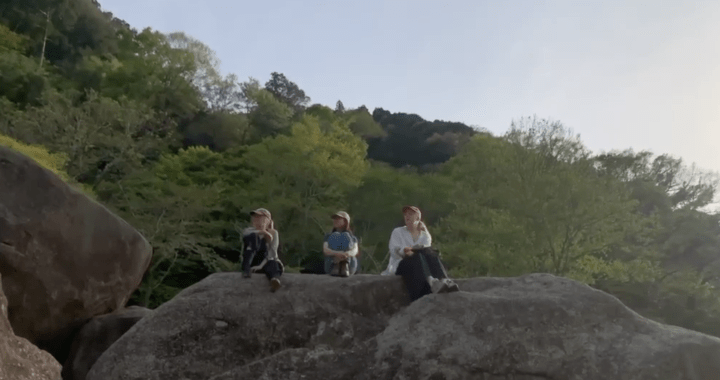Hi! My name is Mia, and I’m Assistant Manager #9 at Obubu! Welcome to the first chapter of my blog series about my time here.
My interest in tea stems from time spent enjoying tea with my family. This interest grew as I explored tea through art, incorporating it physically and thematically into my work (so much so that my art teachers and classmates would always be able to guess if a piece was mine because it related somehow to tea). I have also always felt a strong connection to Japan, as that is where my family is from. Thus, Obubu’s Assistant Manager Programme seemed like the perfect opportunity to pursue my passion for tea, and to learn about the cultivation, processing, and brewing of Japanese tea.
I arrived on the same chilly mid-February day as my lovely co-assistant manager Nicole (AM #10) and Marilena (AM #11). On that day, we met staff members Hiro-san, Miwako-san, Kayo-san, George, and Pau, as well as stagiaires Eva (#187) and Joshua (#188), who had arrived at Obubu two weeks before, and Mac (AM #5), Alix (AM #6), and Marcello (AM #7). Soon after, we met Katrina (AM #8)!
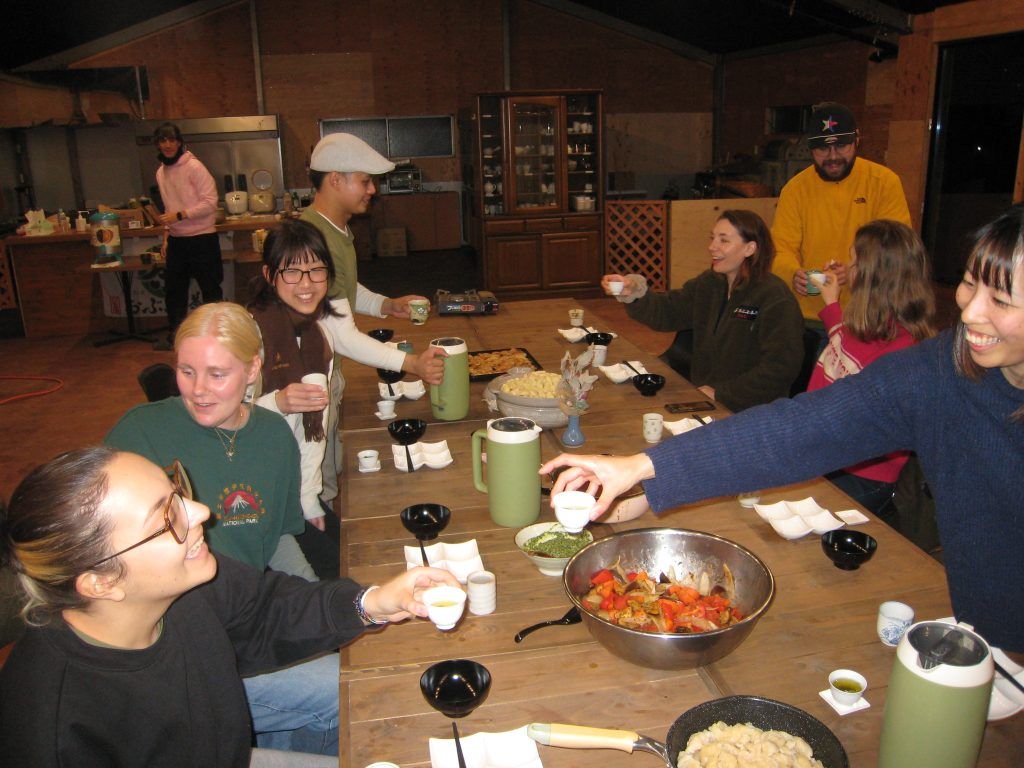
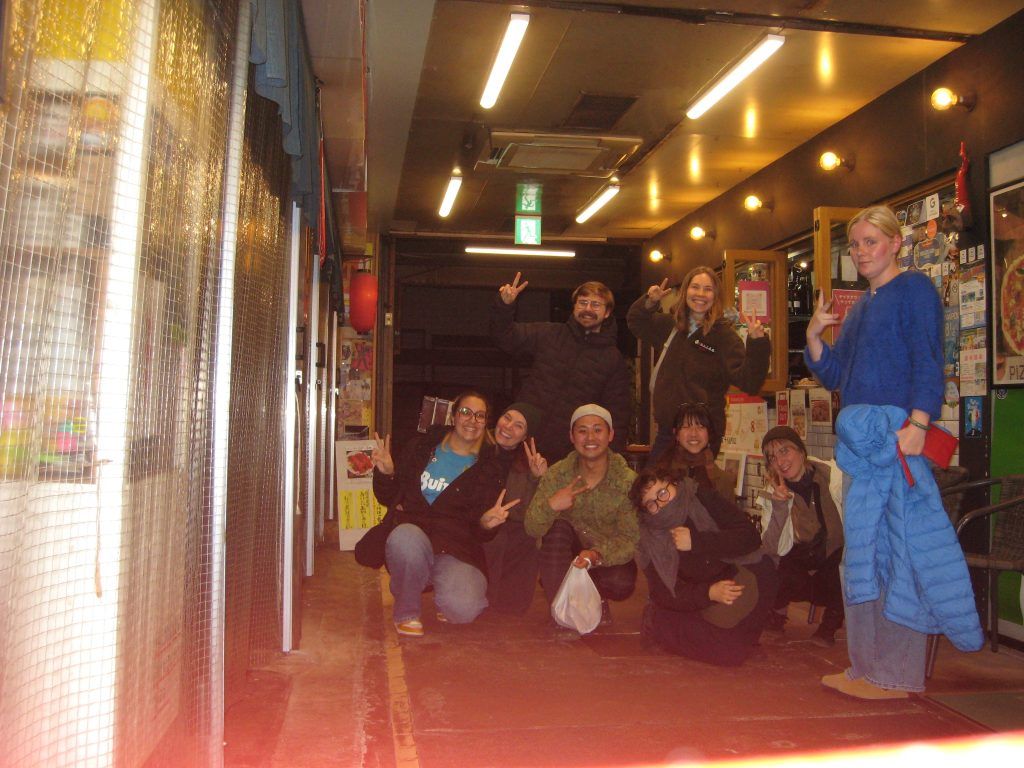
We were lucky to have both our grand senpais, Mac and Alix, and our senpais, Marcello and Katrina, to guide us as we learned and adjusted to Obubu life. Sadly, we had to say goodbye to Alix and Mac two weeks after we arrived, as this marked the end of their year at Obubu. I’m so grateful we were able to meet them, learn from them, spend time with them, and learn about their graduation work in their tea lounges (Mac’s photography lounge and Alix’s Cheese and Tea Pairings lounge). Soon after they left, two very exciting things happened: our other co-assistant manager and former Obubu intern (#141), Tran (AM #12), arrived and we started Kyobancha harvest!
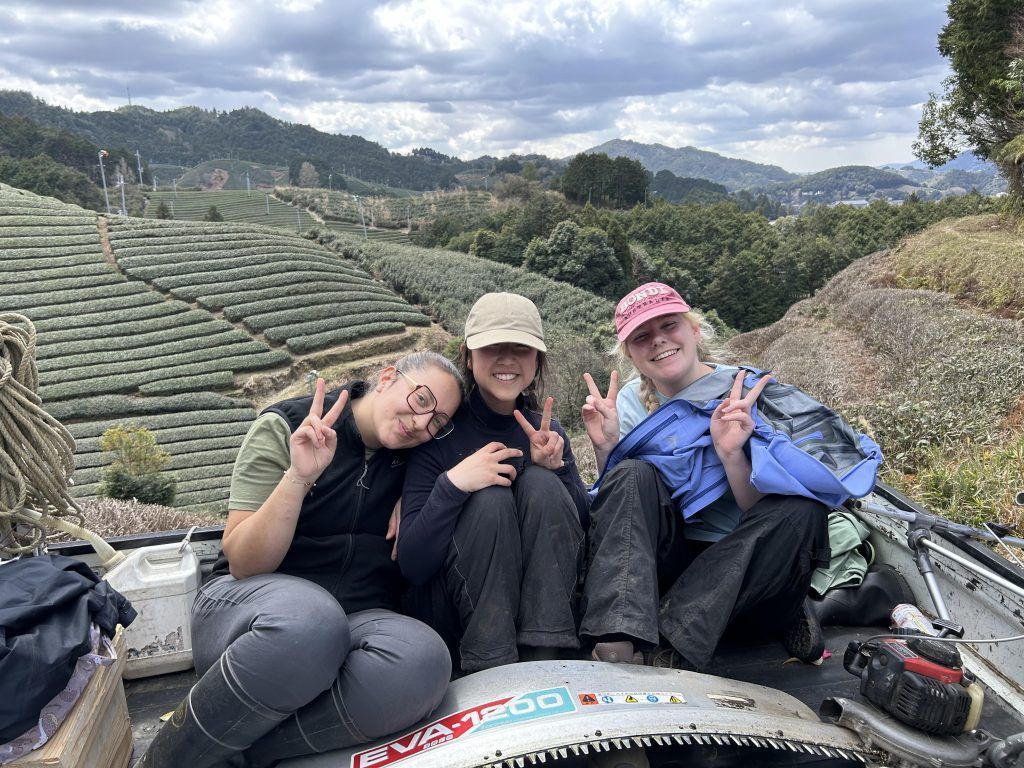
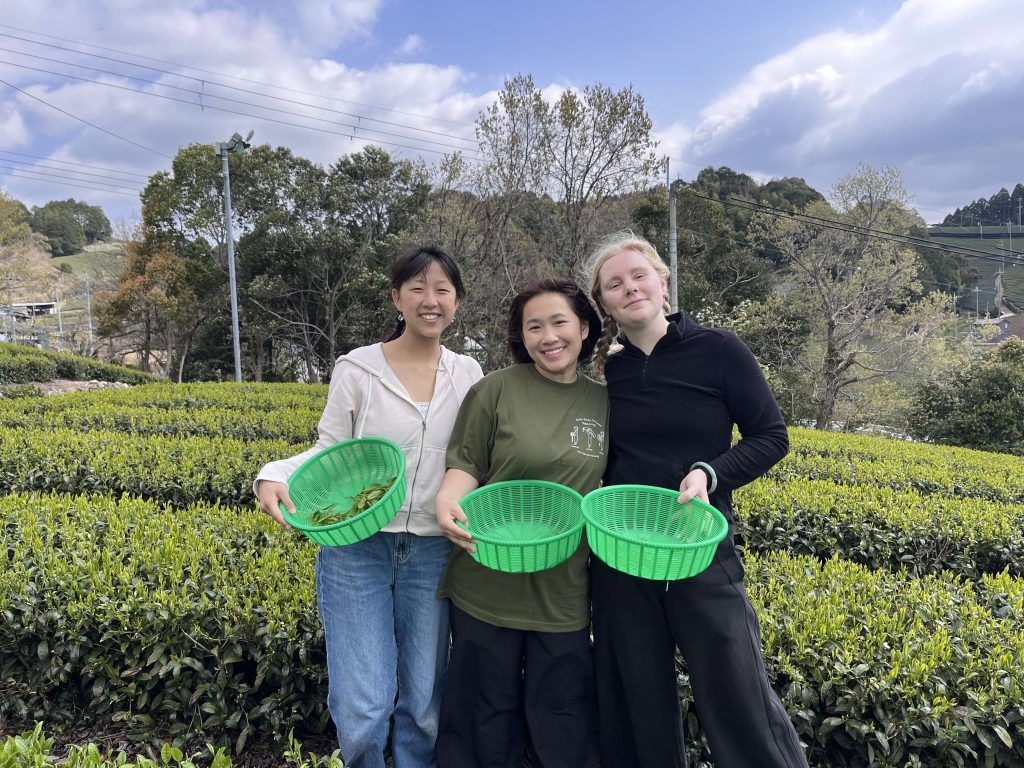
Tran, Nicole, Marilena, and I arrived just before the tourism season came into full force. Soon after we arrived, we began having tea tours seven days a week (as opposed to five), and Obubu’s beautiful new shuttle bus began to run between Wazuka and Kyoto and Wazuka and Kizu. We quickly learned about cultivars de thé, how to run and brew for tea tours, and that Lake Biwa is one of the reasons why Wazuka tea is so good.
In mid-March, we welcomed seven more interns: Cara, Chihiro, Jackie, Sky, Alex, Emily, and George. They arrived just as tea tourism began to pick up and as the Sakura were about to bloom.
The constant comings-and-goings and changes here brings me to something that I enjoy about Obubu, which is that it is rooted in seasonality. There seem to be two main cycles that govern the flow of things at Obubu: the natural seasons of the year and the seasons of the people who come and go.
Amidst all these seasonal shifts, what has helped shape the most memorable parts of my late winter and early spring at Obubu is tea. Here are some memories I have from my first quarter at Obubu, each linked to a kind of tea.
The delightful Houjicha et Matcha tiramisu made by Eva is surrounded by memories of the welcome party the night of my arrival. It was so heartwarming to receive such a warm and thoughtful welcome.
Suzume Kukicha recalls an objectively uninteresting memory, but one that is meaningful to me. Without knowing what it was, I tried brewing some during my first few weeks here. I was surprised to see that the tea looked like twigs when I shook it into a houhin. I fell in love with the sweet, comforting, nutty flavour, and I’ve enjoyed learning about Kukicha since then. This memory sticks with me because it was a reminder that there are so many kinds of tea I have yet to discover and taste.
Sencha du vent reminds me of Nicole, Marilena, and my first tea tour training, during which we joined the tour as guests. We enjoyed this tea at Monzen tea field with Miwako-san and the other two tea tour guests.
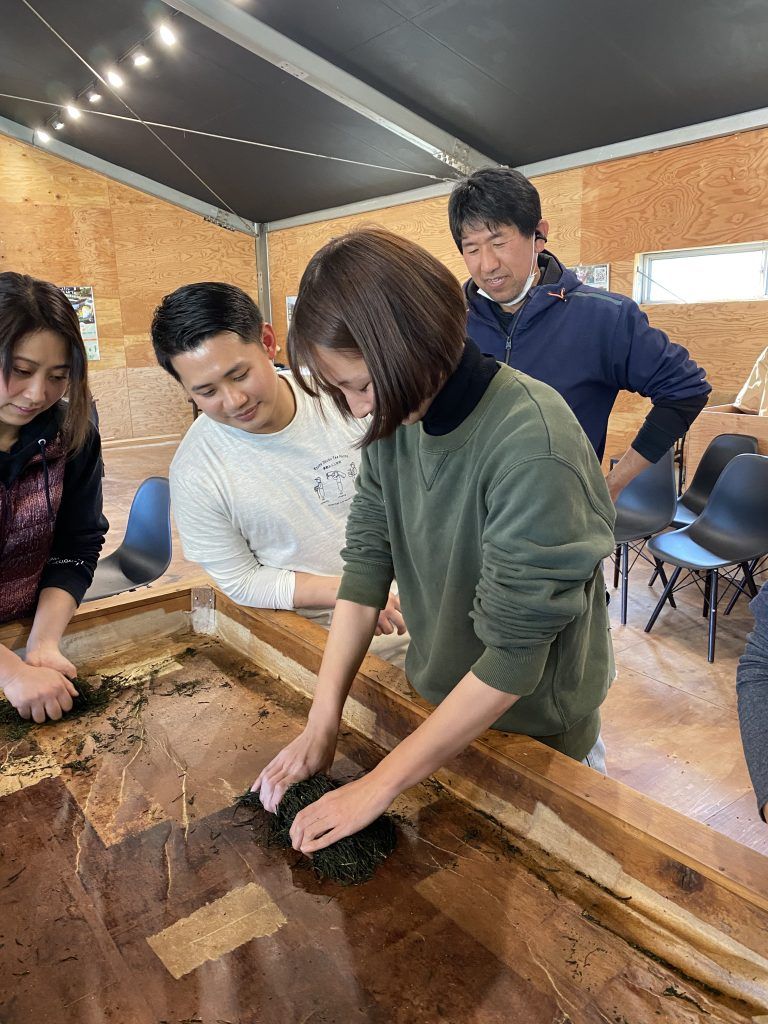
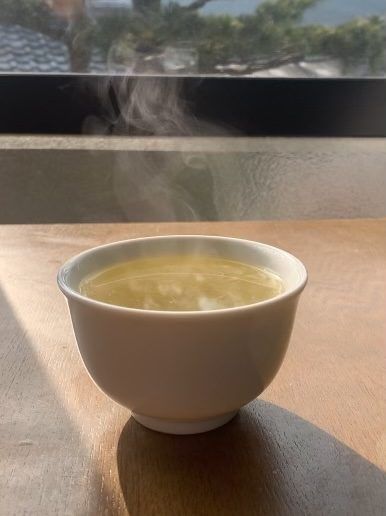
During my second week, we got to participate in a hand rolling workshop taught by Kenta-san! I still remember the surprise I felt when I tasted the Temomicha we made–it was so grassy and fresh-tasting; so different from any other Sencha I had tried.
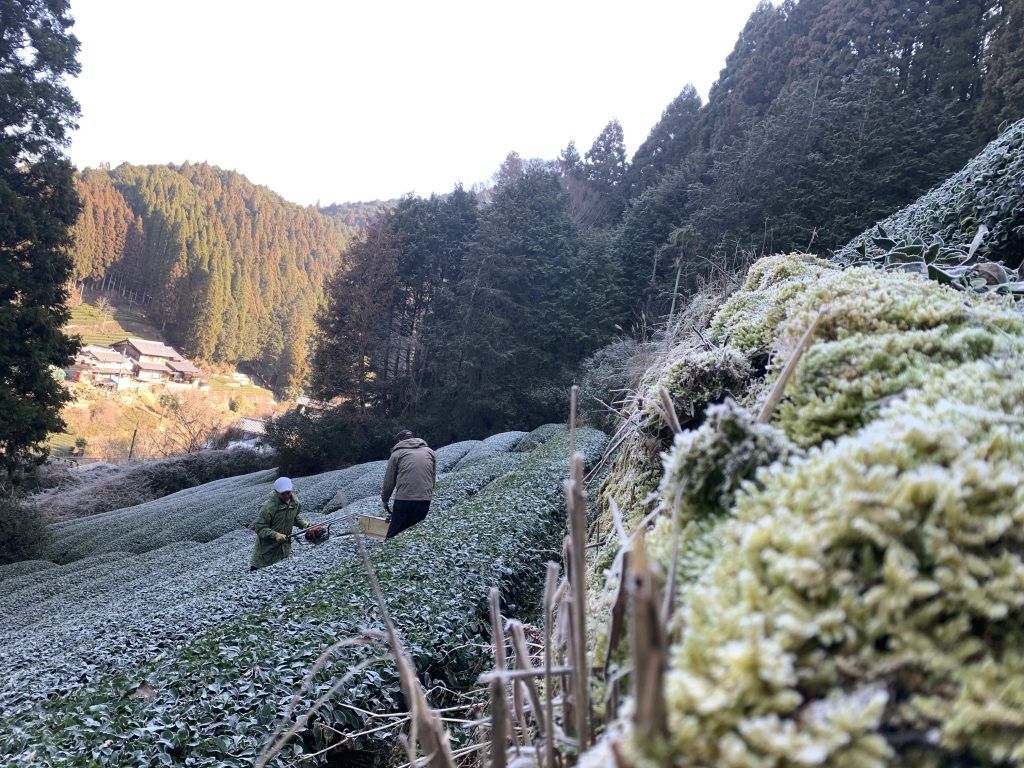
Goishicha reminds me of my first all-day Akky-san Support with Akky-san and Joshua at frosty Jinja. We began the day at Jinja Field, which was dusted with beautiful frost. The forest and houses on the mountains beyond the field were bathed in golden-orange light as we trimmed. During a farming break, we enjoyed Goishicha, a pungent fermented tea, brewed by Joshua.
On one of our days off, Katrina drove me and Nicole to Tenku in the keitora, where we enjoyed Phoenix Oolong amidst the heavenly Yabukita trees.
One of my favourite trips from this quarter was traveling around Lake Biwa with Katrina, Cara, Marilena, and Tran. We visited Mangetsu-ji Temple and its Ukimido pavilion, which once inspired ukiyo-e artist Hiroshige, and enjoyed Sencha at the top of Mount Shizugatake, which sits at the northern tip of the lake. The lake and the sky were so close in colour that it almost looked like the rocky masses of land in the water were islands of a floating world. Since we talk about Lake Biwa in tea tours nearly every day, I’m glad that I’ve not only heard of it but that I’ve seen it too!


One day, Joshua, Eva, George, and I hiked to three of Obubu’s tea fields: Jinja, Monzen, Aoi Mori. We enjoyed Houjicha at Monzen while talking about Rococo art, books, and films, among other things.
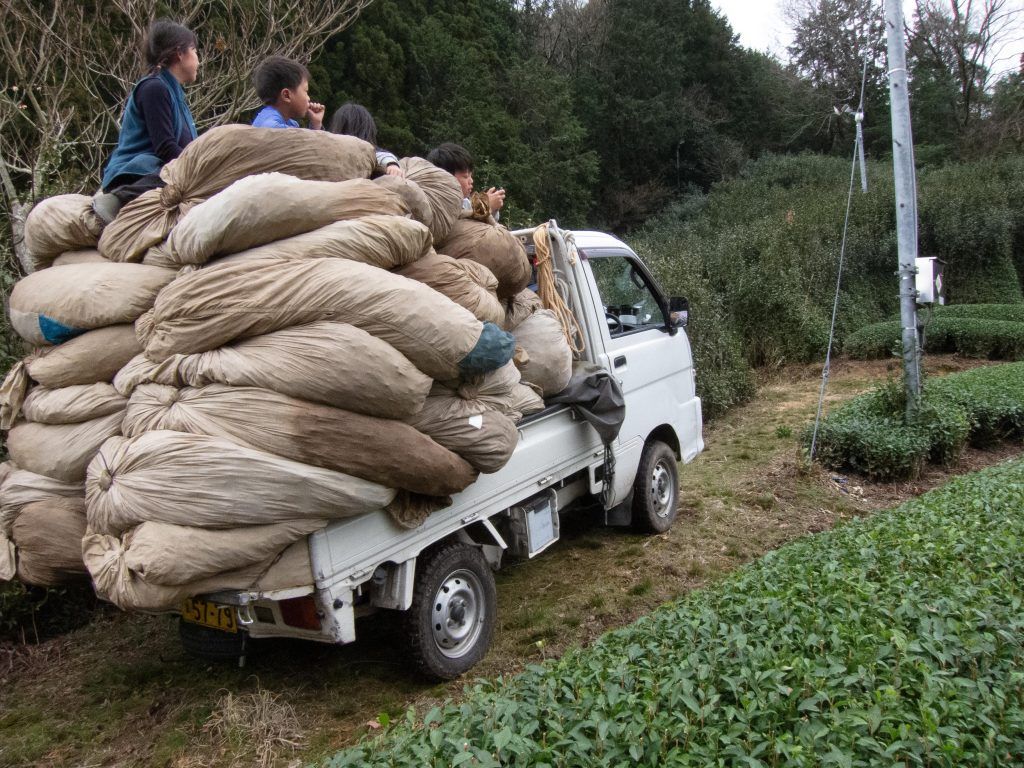
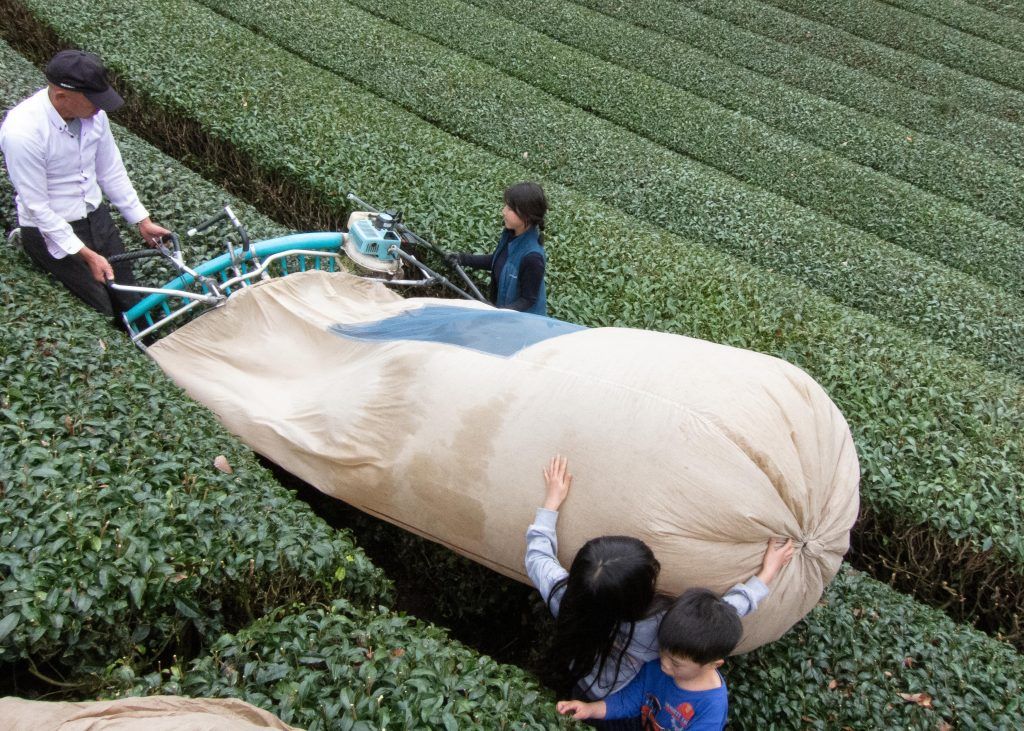
My first harvesting experience was in Eriyoshi tea field with Akky-san, Akky-san’s kids, and George (intern #195). Here, we harvested leaves for Kyobancha and enjoyed Sencha de la lune d'automne during a farming break.
In April, the Sakura bloomed in a burst of satiny pale pink and peach. They stayed just long enough for some of us to enjoy a a Pu’er picnic under a sakura tree (during which we were surprised by Miwako-san and Sakura-chan, who were on an evening walk!). But before I knew it, the blossoms were past their prime and they no longer greeted tea tour guests as I drove them up to Monzen tea field. But they didn’t leave behind a sad, colourless world. Soon after, bright green spring tea leaves shot up from many tea fields, painting gold green streaks across the hills of Wazuka, new interns, Zehra, Adam, Afi, Garance, Izzy, and KD arrived, and we said goodbye to Eva and Joshua.
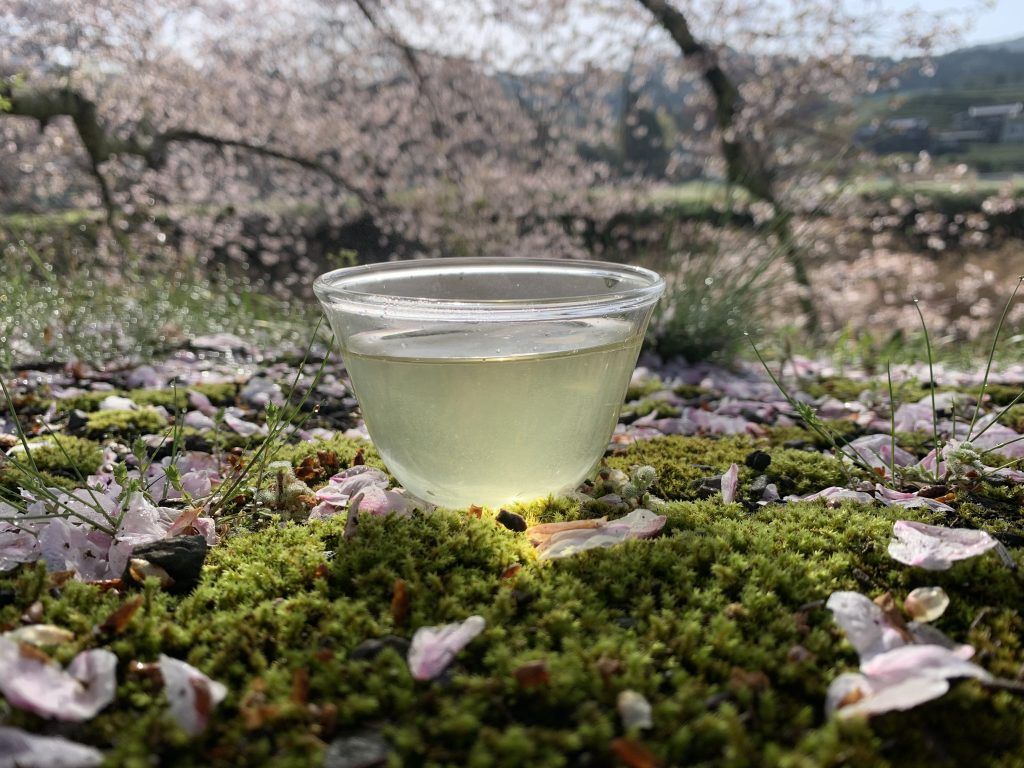
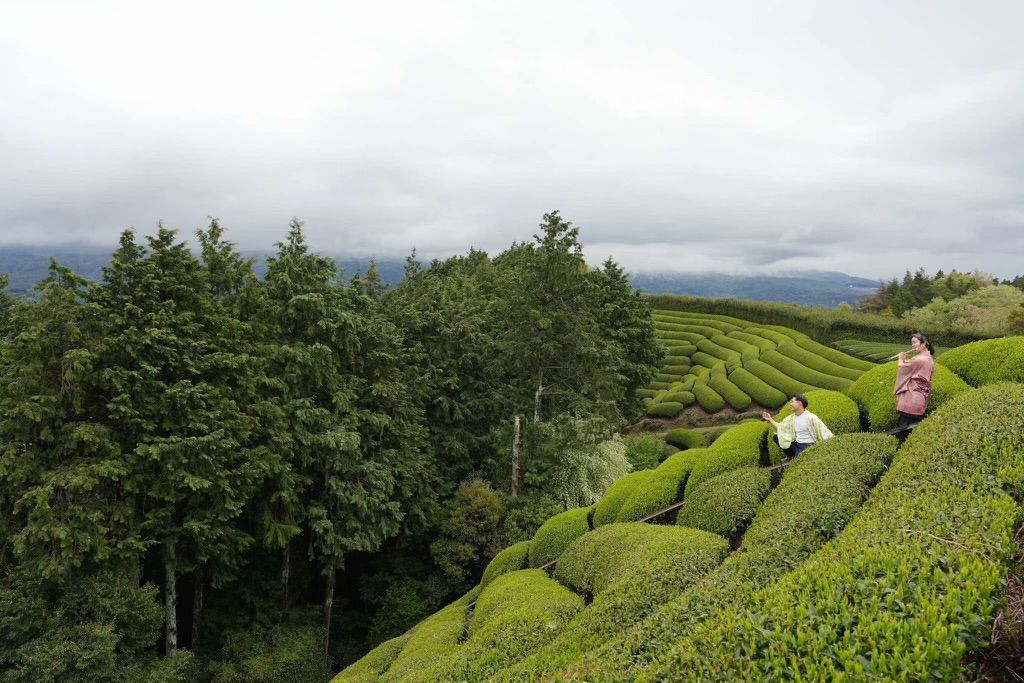
Though it is a bit sad to see the sakura crumple and fade away and for friends to leave, it is consoling to understand that there is still a cyclical nature to these seasons. The sakura will bloom again next year, and though people leave, you may meet them again–just in April for example, four previous interns, Marie (#129), Symphony (#153), Giedre (#120), and Saya (#132) visited Obubu!–and even if you don’t, their impact on you remains and perhaps may even make its way to someone else through you. Furthermore, their departure may mean better things in the future; for example, the Spring tea buds following the sakura flowers and new opportunities for those who had graduated from Obubu. These seasons are so fleeting, but this is what makes them so special–and what makes us even more grateful for them when they return. They don’t stay long enough for them to become mundane to us. And tea helps root meaningful parts of these seasons in our memories.
Before I knew it, April was gone, and May arrived with the magical Hachiju-Hachiya, marking the beginning of the Spring harvest… You can read more about this in Marie Romano’s recent blog post and the next chapter of my blog series! I’m so excited for this new season at Obubu, and I hope you’ll follow along for all the assistant managers’ blogs!
またね!
ミア

